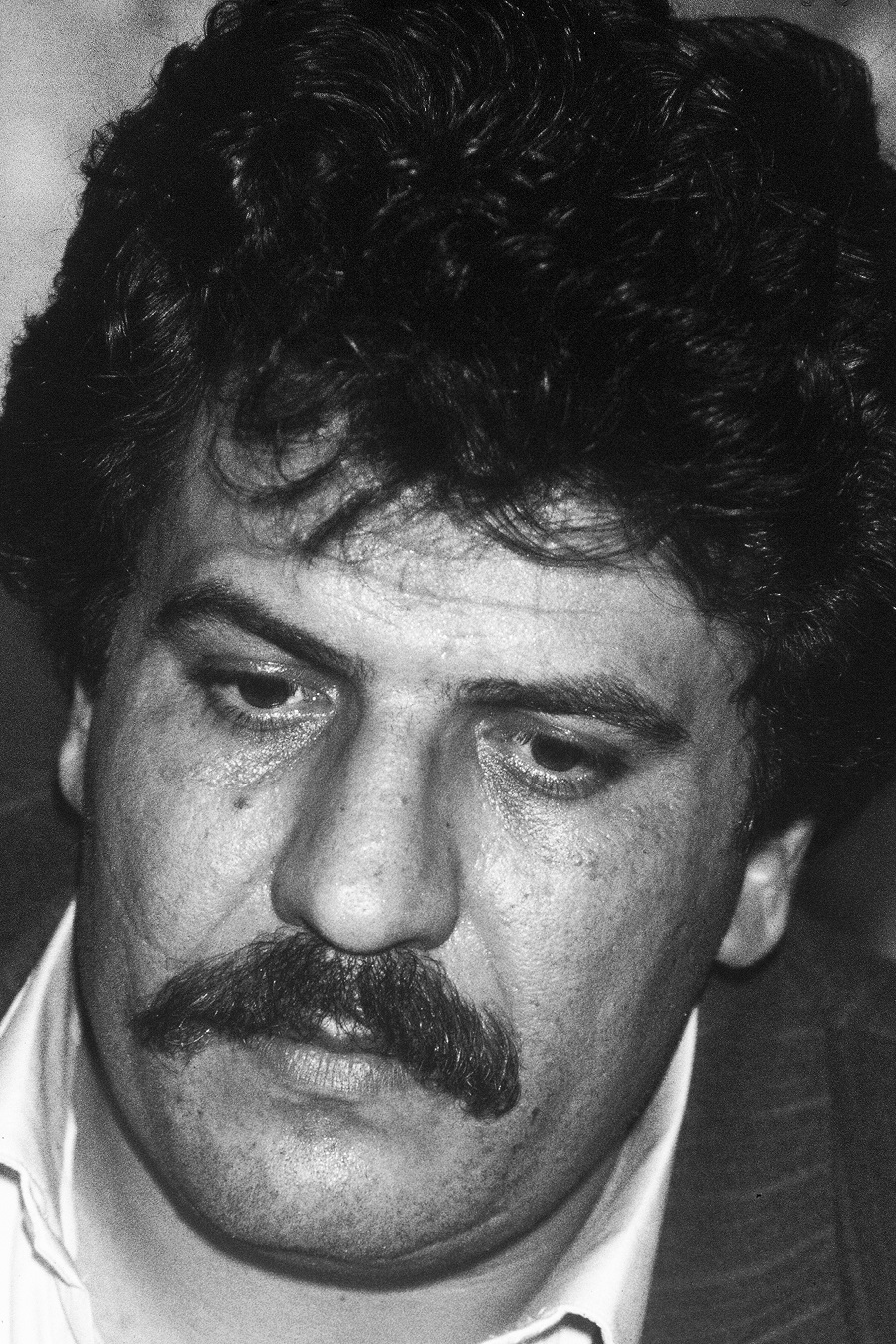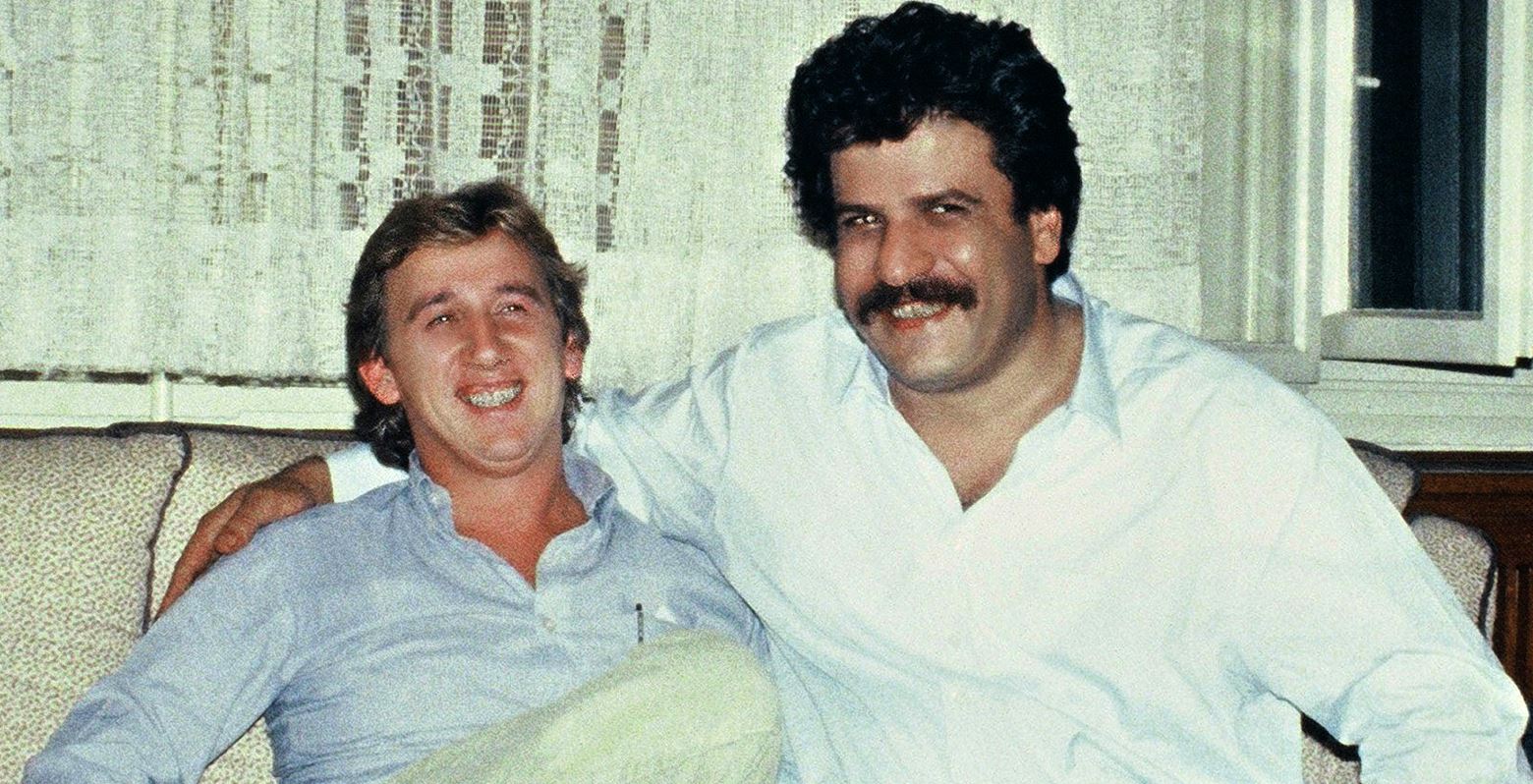Jadran Lazić: '50 Years of Photography' Opens at Palace Elisabeth Hotel on Hvar
July 27, 2022 - From Split to Los Angeles, world-famous photographer Jadran Lazić will open an exhibition at Palace Elisabeth in Hvar town tonight, showcasing 50 years of his work.
The exhibition opening of the world-famous Split photographer Jadran Lazić, entitled 'Jadran Lazić: 50 Years of Photography', will open on Wednesday, July 27, at the Palace Elisabeth hotel, in the hotel's Red Salon, starting at 8:00 pm.
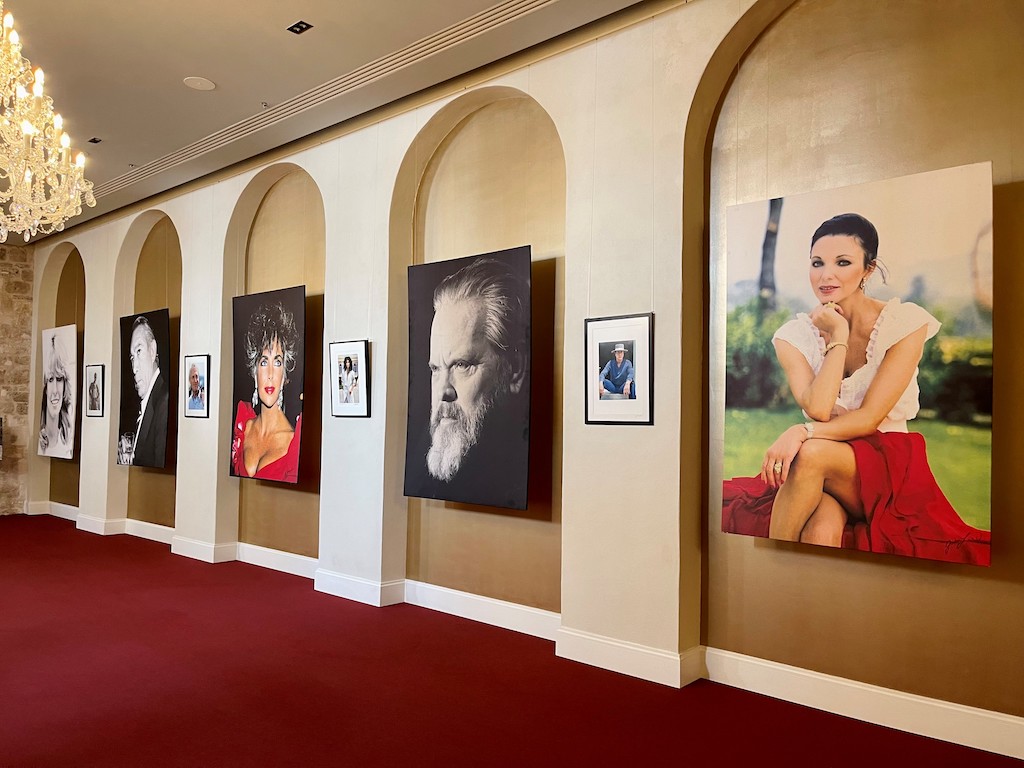
The exhibition includes photographs taken across fifty years of intensive and dynamic work shooting actors, singers, football players, and others whose lives gained mass popularity in international media. The exhibition will also present a monograph of Jadran Lazić's photographs, which come in two volumes of 900 pages, offering a visual time machine of 20th-century glamour.
This year, for the first time, the Red Salon, which is part of the Palace Elisabeth Hotel, was transformed into a unique gallery that offers visitors a special cultural experience. The space is ideal for events, conferences, and events for up to 80 guests. As an integral part of the Palace Elisabeth Hotel, the space is recognizable by its authentic atmosphere and high ceilings, which sets it apart from other event venues.
The exhibition 'Jadran Lazić: 50 Years of Photography' will be open until October 20, and visitors can see it every day from Monday to Sunday. Jadran Lazić will officially open the exhibition tonight!
Lazić was born in Split in 1952, where he started working as a photojournalist as a high school student and then as a photographer of pop stars, actors, and athletes of the time. He then headed to Paris and secured an engagement with the reputable Sipa Press agency. From being a paparazzi, Lazić quickly became a professional photographer that covered numerous important events. His photos were published by elite magazines such as Time, Newsweek, Paris Match, Hello, Gale, Stern, People, and Style.
Today, Jadran Lazić lives half the year in Los Angeles and half in Zavala, Hvar. Lazić has not stopped as a photographer, either, and owns a photo agency in Los Angeles, where he has lived since 1987.
Lazić's portraits of film, music, sports, art and other stars are collected in his monographs, including Jack Nicholson, Marlon Brando, Robert De Niro, Elizabeth Taylor, Sean Penn, Mila Jovovich, Jean-Claude Van Damme, David Bowie, Sean Connery, Faye Dunaway, Jodie Foster, Bianca Jagger, Jimmy Carter, Chuck Norris, Shanon Doherty, Brigitte Bardot, Sofia Loren, Richard Gere, and more.
The two-volume edition was printed in a thousand copies, of which 750 in Croatian and 250 in English. The deluxe edition allows buyers to choose one of Jadran's ten best photos, signed and numbered. The monograph price is HRK 2,000 for the standard edition and HRK 4,000 for the deluxe edition.
For more, check out our lifestyle section.
How a Split Photographer Scooped Soviet Brezhnev Funeral World Exclusive
September 10, 2021 - Continuing our look at the exploits of world-famous Split photographer Jadran Lazic and his behind-the-scenes stories of capturing the biggest names and events, how the man from Split became the only Western-accredited photographer at the Soviet leader Leonid Brezhnev funeral back in 1982.
These days, celebrity photographer Jadran Lazic can be found at home among his beloved lavender fields on the island of Hvar, reflecting on a glittering career being the camera spanning over 50 years. In addition to snapping some of the world's biggest names, he has also racked up some impressive world exclusives over the years, as well as befriending several celebrities - it was Lazic who brought a young Jodie Foster to Hvar for a holiday back in the 1970s, for example.
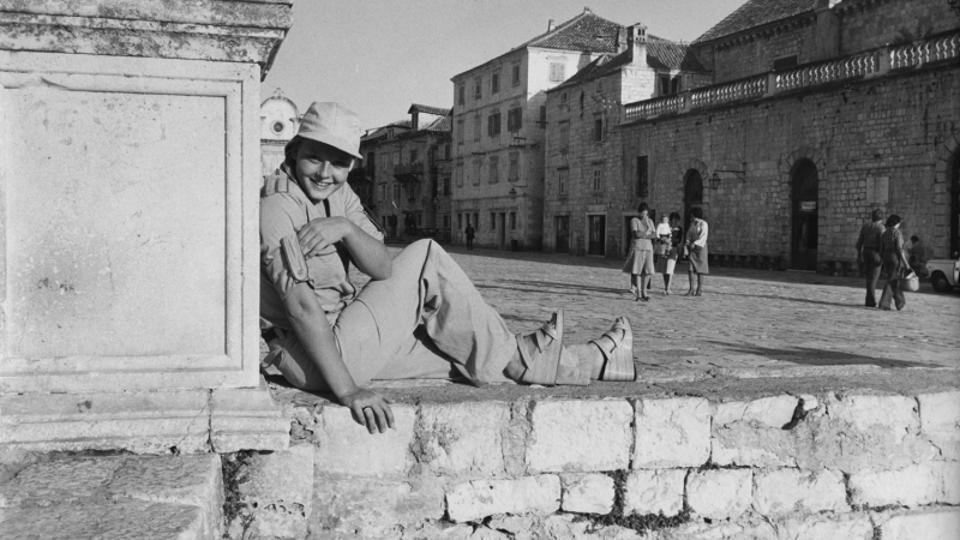
Earlier this year, TCN covered the extraordinary story of how Lazic tracked down and photographed wanted Palestinian terrorist and architect of the Achille Lauro hijacking, Abu Abbas, to a Belgrade apartment.

That exclusive took place in 1985, some three years after perhaps an even bigger achievement - the only photos by a Western-accredited agency from the Leonid Brezhnev funeral back in 1982. Photos which would sell for an impressive US$300,000 in 1982 currency (almost US$850,000 today), and would enable the Split snapper to buy his dream home on the water in Zavala on the island of Hvar, where he divides his time with Los Angeles and looks after his olive and lavender fields. As with the Abu Abbas story, Lazic's success was a mixture of charm, determination, ingenuity, and luck.
Lazic was living in Belgrade back in 1982, working for Paris-based photo agency, SIPA. Communications back in those days were a world apart from the instant digital age of today, and he did not even have a phone in his apartment, which was a major disadvantage for a breaking news photojournalist. As such, he tended to hang around the post office a lot to have better access to communications.
A few weeks before the Soviet leader died, things were fairly quiet, and Lazic decided to be proactive in creating stories to cover. From the post office, he called his boss in Paris and they agreed that he would try and cover the upcoming annual October Revolution Parade in Moscow. This was the height of the Cold War, and Western media access was restricted, but entry for citizens of Socialist Yugoslavia was a lot more relaxed. Lazic was unsure whether or not to apply as a local freelance reporter or an official SIPA photographer. He made the wrong choice with the SIPA route, and his request was politely declined, as it would now be if he applied the same way in the future.

(Jadran Lazic today, with the author. The only association to th Hammer and Sickle these days is during the annual lavender harvest on Hvar)
A few weeks later, he was driving his daughter to her Belgrade kindergarten, when he heard the news that the Soviet leader had died. He knew that he had to go and cover the event and headed straight to the post office to get permission from Paris. With official approval from France, now came the tricky bit - how to get permission to enter Russia after his recent unsuccessful embassy application?
Lazic called the editor of a Yugoslav magazine and asked if they would be interested in sending a reporter to cover the story if he accompanied the journalist, covered his own costs, and gave his photos to the magazine for free, in return for a letter naming Lazic as the accredited photographer to the journalist. The editor agreed, a business visa was obtained, and both were on the next flight to Moscow from Belgrade with Aeroflot at 10:30 the following day.
The plane never reached its destination. A rough flight with plenty of turbulence was eased somewhat by the bottle of scotch the two of them shared on the flight, but it was clear from the constant turning that something was wrong, and the flight time was a lot longer than advertised. There was no announcement from the flight crew, and all was only revealed with the plane finally touched down at... Kiev - Borispol in Ukraine.
The official explanation for the diversion was bad weather in Moscow, although it was more likely due to the chaos surrounding the impending Brezhnev funeral and its logistics.
Lazic was feeling uneasy. He was technically in the Soviet Union, but probably several checkpoints away from his end destination of Moscow. Prior to his departure, Paris had informed him that no foreign journalists were being allowed in, and so the agency was depending on him. As one of the only (perhaps the only foreign-accredited photographer), this could be a huge opportunity for the agency.
His colleague passed through without problems and was seeing striking up a conversation with two ladies while Lazic awaited his turn anxiously. The USA visa in his passport elicited a frown from the border guard, who called his superior. Lazic produced the letter from the Yugoslav editor and sweated while they pored over it and discussed his fate. Having searched his things and gone through the papers and magazines he was carrying, and having checked how much money he had, they let him through.
His colleague had not been idle in the meantime. By chance, one turned out to be the wife of the Sarajevo daily, Oslobodjenie. She was to play a crucial role when they finally landed in Moscow at 10pm that evening.
Moscow was chaos. There was no press centre to help arriving journalists, so finding accommodation was going to be a challenge at this late hour. Even more so as there were no taxis and the last bus into the centre had long gone. As her husband was currently in Belgrade, the Sarajevan wife kindly offered them both a place to stay, and a lift into town was secured by his colleague, who managed to find a Japanese trade representative with enough space in his Lada for all of them. The Brezhnev funeral was one step closer.
Arriving at the apartment at 1am, there was no time for sleep. Representatives of the official Yugoslav news agency, TANJUG were also living in the building, and Lazic got into earnest conversation to see how he could get to Brezhnev. The TANJUG team was very pessimistic about his chances, given that they themselves had only received one funeral pass from two applications.
Thanks to the help of their new TANJUG friends, a letter of recommendation was procured from the Yugoslav Embassy in Moscow, which brought the Belgrade Two to the Soviet Ministry of Foreign Affairs. Every now and then, one did encounter a friendly and helpful public official in the Soviet Union (I encountered three in my time there), and Lazic had a slice of luck in this case.
The official said that their chances were slim, but he would see what he could do, advising them to head to the Trade Union Hall with the permanent correspondents, where Brezhnev's body was lying in state. The official would then inform the staff there to let them enter.
They were driven to the Trade Union Hall by the permanent correspondent of Yugoslav daily, Borba, who was well-versed in negotiating checkpoints and the Soviet bureaucratic system. And upon arriving, they were welcomed by a friendly face - the helpful official from the Ministry of Foreign Affairs. Not only did he instruct the staff to let them enter, but he assigned two security officers to take them through the back corridors to avoid the line of journalists so that they could see Brezhnev lying in state alone.
"You have one minute, then you must leave."
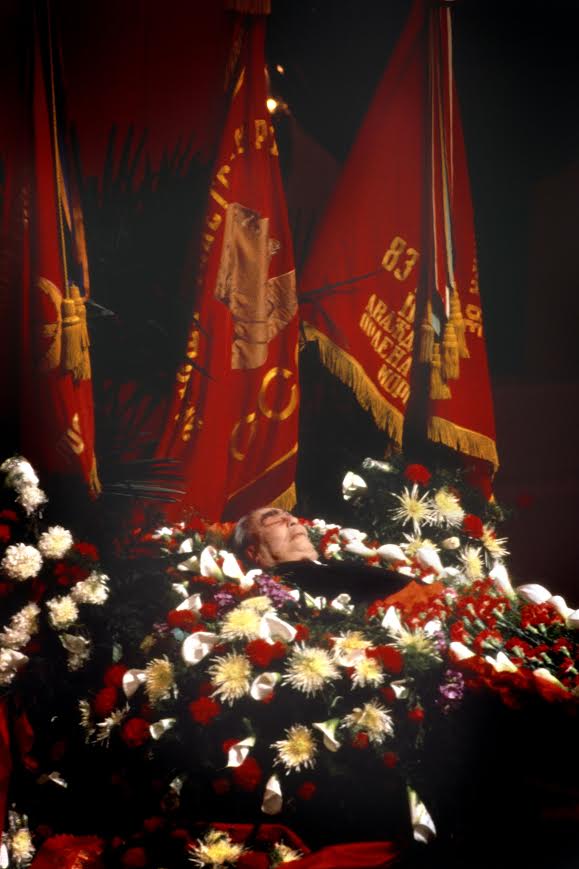
Snap. Snap. Snap. Lazic got to work, shooting as much as he could in the short time allocated, and ignoring pleas to stop and to leave. He would only stop when they physically removed him, which they did after a couple of minutes. He had got the first part of his exclusive. How he would get the pictures to Paris was a problem to be resolved in the future.
While he had great shots of the body lying in state, by jumping the queue, he had missed the chance to shoot the late Soviet leader's family, but he got his chance the following day. The following day also started brightly for another reason, as one of his new TANJUG friends had somehow managed to obtain a pass for Lazic for the Brezhnev funeral cortege.
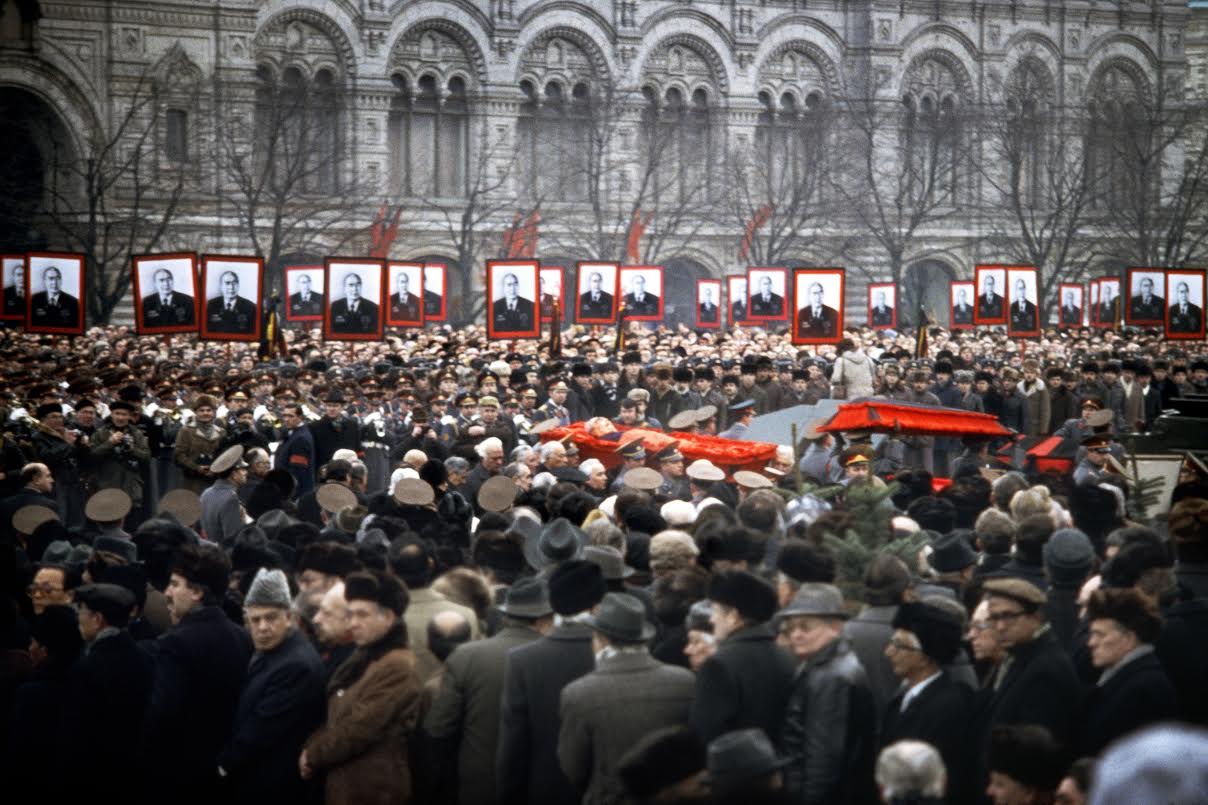
Security was tight, and nobody without a pass could enter within a 4km radius of Red Square. After endless checkpoints, Lazic eventually reached Red Square which was already filled with mourners. Trying to get closer to the mausoleum proved impossible, as security guards were blocking everything. Even the offer of a US$100 for a guard to look the other way failed. In desperation, Lazic retreated and climbed to the highest point he could in one part of the square. He would have only a moment to shoot as the cortege passed, and the shot would be through a crowd so would require some skill, but it was the best he could do.
The Brezhnev funeral cortege moved slowly towards its end destination of the Kremlin necropolis, but there was still only time for 5-6 shots. And having taken those, his job was done. While everyone else continued to take part in the funeral, Lazic had a plane to catch to Belgrade, and photos to send to Paris.

But first he had to get through the checkpoints of the Soviet authorities. He knew he had a bombshell, which would please his bosses in Paris, but he was not sure how Soviet border guards might feel if they discovered what he had with him. He decided to take some precautions.
Back at the apartment, he wrapped the precious film in aluminium foil and put them in the carton boxes for unused film rolls, then put the unused rolls into his cameras to pretend that they were already exposed. This was a precaution against X-rays and a border guard's decision to destroy the film in his camera.
His journalist colleague Slavko went first and passed through without a hitch with his luggage. Lazic was panicking internally, but started to relax once his luggage too passed unhindered. He was almost home, but it turned out he started to relax too early.
BEEP! Much to his surprise, as he had no metal on his person, the scanner beeped and he was frisked. After some time, an offending nail clipper was found in his jacket - it must have slipped through a hole in the pocket.
The nail clipper may have been an innocent explanation, but that did not mean that the Soviets were convinced of his innocence, and he was taken to a room for questioning. Foreigners visiting the Soviet Union were required to report the amount of foreign currency they had on entry and departure, as well as receipts from any official purchases. This was done to control illegal exchange to roubles in the black market, where the exchange rate was much higher.
Lazic showed them the money he had, as well as the official receipts for the two fur coats he had bought for his daughter from the beryoska hard-currency store, but he did not have the declaration from his arrival in Kiev. In all the confusion, it had been overlooked.
The border official left the room to consult with his superiors.
And then, a moment which required a dramatic and fateful decision. Looking through a curtain, he saw his bag a few metres away. Ten steps from there, the tunnel to the Belgrade flight. What the hell, he thought. If he could at least get the film to Slavko to forward to Paris, his trip would not be in vain. Confidently, and without a second thought, he strode out, grabbed his bag, and headed down the tunnel. He was waiting for a shout, a whistle, a firm grip on his shoulder from a guard.
But there was none.
Aboard the plane, he quickly informed Slavko what would be required of him, in case the Soviets boarded the plane:
“In case they come for me, take these films. Here’s the address of Sipa Press. When you arrive in Belgrade, send the films to Paris as soon as possible!”
No border guards boarded the plane, and after a few anxious minutes, the cabin door closed, and soon they were airborne. Destination Belgrade. He had done it.
Almost.
Belgrade was not Paris. The usual protocol for getting his film to Paris was to go to the airport, find a sympathetic-looking passenger and ask them to carry the film to Paris, where a SIPA representative would be waiting at passenger arrivals. Hardly a system that would work today...
Although the system worked very well, the stakes were higher with this assignment, and Lazic decided to fly straight to Paris, accompanied by the film and his daughter's fur coats. He had something the world wanted to see, and time was of the essence.
He knew that he had something very valuable, but it was only on arrival that he realised quite how valuable. Usually, the agency sent a courier to collect the film from the airport, but Michel Chicheportiche, the agency's head of sales and the director's most trusted lieutenant, was there to meet him. THAT had never happened before.
When he confirmed he had the films with me, Chicheportiche excused himself and went to the nearest payphone to call his boss. Three minutes later he returned with a generous offer:
"The boss is offering you his personal Mercedes in exchange for the film." Quite an opening offer, and one which the man from Split was prepared to play with.
“What good for me would a Mercedes with French license plates be in Yugoslavia? The customs duty and vehicle registration alone would cost me as much as another Mercedes.”
Another visit to the pay phone, short conversation, and then enhanced offer. The boss would cover all the costs of customs, registration, and taxes.
Now Lazic was sure he was onto something. Declining the latest offer, he suggested that they head into town and negotiate directly with the boss, settling finally on a 50/50 split of the proceeds of the sale of the photos.
As the only Western-accredited photographer there, the photos were sold all over the globe, and young Lazic was handsomely rewarded for his efforts.
And that is how the story of the Hvar's most beautiful lavender field started.
But that is another story...
5th WTA Croatia Bol Open to be held June 7 to 12!
May 13, 2021 - From June 7 to 12, Bol on Brač will again host tennis players at the 5th WTA Croatia Bol Open. Tournament director Feliks Lukas announced on Thursday that, despite the difficult conditions, the tournament would be the strongest so far.
As in previous years, the Bol tournament is part of the WTA 125 series and will be played in parallel with the second week of the Roland Garros Grand Slam tournament in Paris. The WTA Croatia Bol Open prize fund is $115,000, reports T.portal.
The results of the tennis players at Roland Garros will also dictate the draw for the Bol tournament, but the current list looks impressive at the moment.
"We have 13 registered players from the Top 100, and the last one is currently 126th in the WTA rankings. This year, there will be exciting names, some Grand Slam finalists like Sara Errani, players from the Top 5 who used to shine and burn, such as Eugenie Bouchard. What is especially important to me is that all the Bol winners are coming again. Aleksandra Krunić and the best Slovenian tennis player Tamara Zidanšek, who has won the tournament twice, and Luxembourg tennis player Mandy Minella, have announced their arrival. I would especially like to emphasize the invitation for Argentine Nadia Podoroska, who beat Serena Williams in Rome on Wednesday," said Feliks Lukas at a press conference held at Hotel Dubrovnik in Zagreb, where special guests were Croatian tennis players Ana Konjuh and Jana Fett who have a guaranteed invitation to the main tournament.
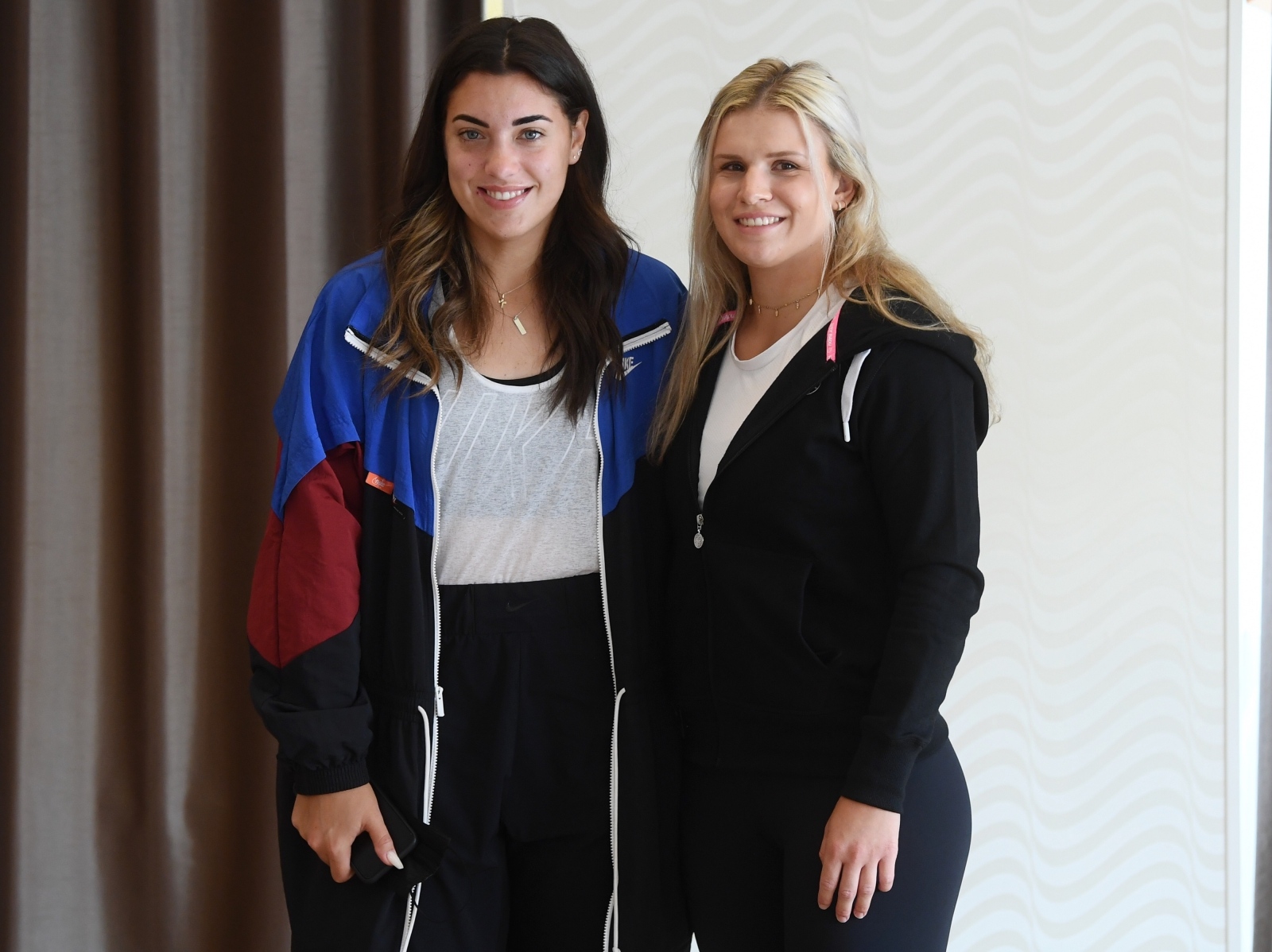
Marko Lukunic/PIXSELL
With them, Croatian tennis players Tereza Mrdeža and Tena Lukas should also take part in the tournament, and the list of applicants also includes Bernarda Pera from Zadar, who plays for the US.
"I would like to thank Feliks for trying to organize the tournament even in these difficult times. It means a lot to all of us, especially the Croatian tennis players. We will see how Roland Garros will fare, and we may not even play. But if not, it is a good consolation to be at home. Bol, where the organization is always at the top level," said Ana Konjuh, who in her only Bol performance (2016) reached the semifinals. Due to a back injury, she had to hand over the match to the ultimate winner, Luxembourg's Mandy Minelli.
Ana's result was repeated in 2018 by Tena Lukas, who was defeated in the semifinal by Slovenian Tamara Zidanšek on her way to her first of two consecutive titles in Bol, which she will come to defend this year.
Vrbovec resident Jana Fett performed in 2019 but did not pass the first round.
"I am thrilled that Bol will be held this year. It is one of my favorite tournaments, as it is at home, and the atmosphere and organization are always great. Bol is a nice place, and I am really looking forward to playing there again. I hope that I will reach at least the final, if not me then one of us," said Fett.
Due to the COVID-19 pandemic, last year's edition of the WTA Croatia Bol Open was canceled, as were all tennis competitions scheduled to take place between mid-March and early August 2020. This year's edition will be played under strict epidemiological measures, which include testing all tennis players upon arrival and after five days and all people in the organization who will come into direct contact with them.
"At the moment, the Civil Protection Headquarters' decision that there is no audience at sports competitions is still in force. We believe that some measures will be eased by the beginning of the tournament because the tournament is outdoors and we have excellent conditions. Of course, we are ready to hold the tournament under the measures in force," said the tournament director, referring in particular to the difficult conditions in organizing this year's tournament.
"Our budget has never been smaller, the sponsors also never fewer, but our results as organizations are never stronger. We need to tip our hats off to the sponsors who remain."
In addition to tennis, the Bol tournament is also proud of the accompanying events organized as part of the tournament, and they will not be missing this year either.
"In the last edition, we shot the official video of the famous pianist Lola Astanova, which was watched by more than a million people, which was a huge promotion, and it all happened as part of the WTA tournament. This year, our theme is a combination of art and sports, so that world-famous photographers, such as Jadran Lazić and Čedo Komljenović, will come to Bol. Jadran Lazić will present a monograph of his opus exclusively in Bol. As part of the tournament program, we will have the opening of the Museum of the Dominican Convent in Bol," announced Lukas and concluded:
"Every year, Bol has made a significant contribution to the promotion of Croatian tourism, and this year it is of great importance to show the world that Croatia is a safe destination."
To follow the latest sports news in Croatia, follow TCN's dedicated page.
To learn more about sport in Croatia, CLICK HERE.
How I Snapped Terrorist Abu Abbas in Belgrade After 1985 Achille Lauro Hijack
March 13, 2021 - The inside story of how a Split photographer photographed wanted terrorist Abu Abbas in Belgrade after the hijacking of Achille Lauro in 1985, a photograph that made the cover of Time Magazine.
One of the things that I adored during my 13 years on Hvar was just how egalitarian things were.
Nobody cared if celebrities were famous, and the paparazzi that hound celebs elsewhere tend to leave them alone. Because it is a holiday destination, people also dress informally, and I have lost count of the number of interesting people I have met over the years over a cold one at The Office on the main square in Jelsa, only to be nudged by a friend when they leave:
"You DO know who that was, don't you?"
One of my favourite snippets of useless information on this subject is that the BBC's official football blogger, Phil McNulty, always does his big Premier League season prediction at the next table to me in the cafe. And so I couldn't even claim that I was the top British blogger in in my local in the third biggest town of a Dalmatian island... I digress.

One of the other regulars on the square is the man on the left of the photo above. Jadran Lazic probably has the closest things to a perfect life, splitting it between his celebrity photography lifestyle in L.A. and his lavender fields on the top of Hvar. Having started his photography career taking photos as a kid at Hajduk Split, he has had an unbelievable career, which has taken him all over the world, including some amazing exclusives. He was, for instance, the only photographer accredited to a Western photo agency (SIPA in Paris) to snap the body of Soviet leader Leonid Brezhnev lying in state in Moscow, and he was the man who brought a young Jodie Foster to holiday on Hvar back in the 1970s.
One of the guaranteed things in my calendar each year (7 years out of the last 8) has been to accompany Jadran to the top of the island at 04:30 in the morning to help him pick his beloved lavender harvest. If you have never seen a lavender harvest, check out the video above - an idyllic lavender field on the top of the most beautiful island in the world.
Over the years, Jadran and I have spent quite some time together, and I have taught him all I know about photography. I have heard some of his incredible stories, which are soon to be published in a special monograph to commemorate his glittering 50-year career. He kindly agreed to share some of his photos and stories so that I could retell them in my own words.
We begin with the incredible and (I think) yet untold story of how a Dalmatian photographer managed to get a world-exclusive photograph of the world's most wanted man at the time. A photograph that made it to the front cover of Time Magazine, for which Jadran received $50,000. A very tidy sum, but nothing compared to the $2,500,000 bounty on the head of Abu Abbas, leader of the Palestinian Liberation Front and mastermind of the hijacking of the Italian ship Achille Lauro off the coast of Egypt back in 1985.
I was 16 when the hijack took place, and I remember the horror of it all. The threat to start shooting American hostages if their demands were not met at 15:00 that day. And then the brutal assassination of an elderly Jewish American tourist. Leon Klinghoffer was 69 years old and in a wheelchair. After he was shot, he was thrown into the sea, along with his wheelchair.
Abu Abbas was not among the four hijackers on the ship, but he came to negotiate the end of the hijack he himself had orchestrated. What followed was quite extraordinary. The hijack was ended with condition that the hijackers and Abbas were allowed to leave on a commercial Egypt Air flight to the PLO stronghold of Tunis. American planes intercepted the plane and forced it to divert to an airbase in Italy. The Americans wanted the terrorists, but then things got complicated. The Italians had an agreement with the PLO already in place, whereby Italians would not be targeted by their terror activities in return for certain guarantees. Handing Abu Abbas to the Americans would be a violation of that, with potentially grave consequences if the PLO chose to take revenge.

Much to the Americans' dismay, the Italians allowed the Palestinians to leave for Iraq via Belgrade. As Yugoslavia and the PLO had diplomatic relations, Abu Abbas was relatively safe in Belgrade before his onward journey.
Almost nobody knew that Abu Abbas was in Belgrade, including the man whose photograph of Abu Abbas would soon circulate around the world. Indeed, Jadran Lazic was not even sure he knew exactly who Abu Abbas was. Besides, he had more pressing things to worry about, as he boarded a flight from Belgrade to Zagreb then car to Vienna - he had to buy diapers and other baby supplies unavailable in Yugoslavia in preparation for the imminent birth of his second child.
Arriving back at Zagreb Airport overladen with baby equipment for the return flight home to Belgrade, he was surprised to bump into a colleague from a rival agency trying to get a ticket to Belgrade. The colleague was nervous when he saw Jadran, and Jadran's immediate instinct was that something - or someone - big was in the Serbian capital.
His colleague/competitor could only fly the next day, and Jadran said he would pick him up from Belgrade Airport, no problem, and it would be great if he could carry some of Jadran's baby stuff. He really had bought half of the Viennese baby department.
Jadran then checked in with the office in Paris, as he had not been in contact for a few days due to the trip to Vienna, asking if they any info about someone big in Belgrade.
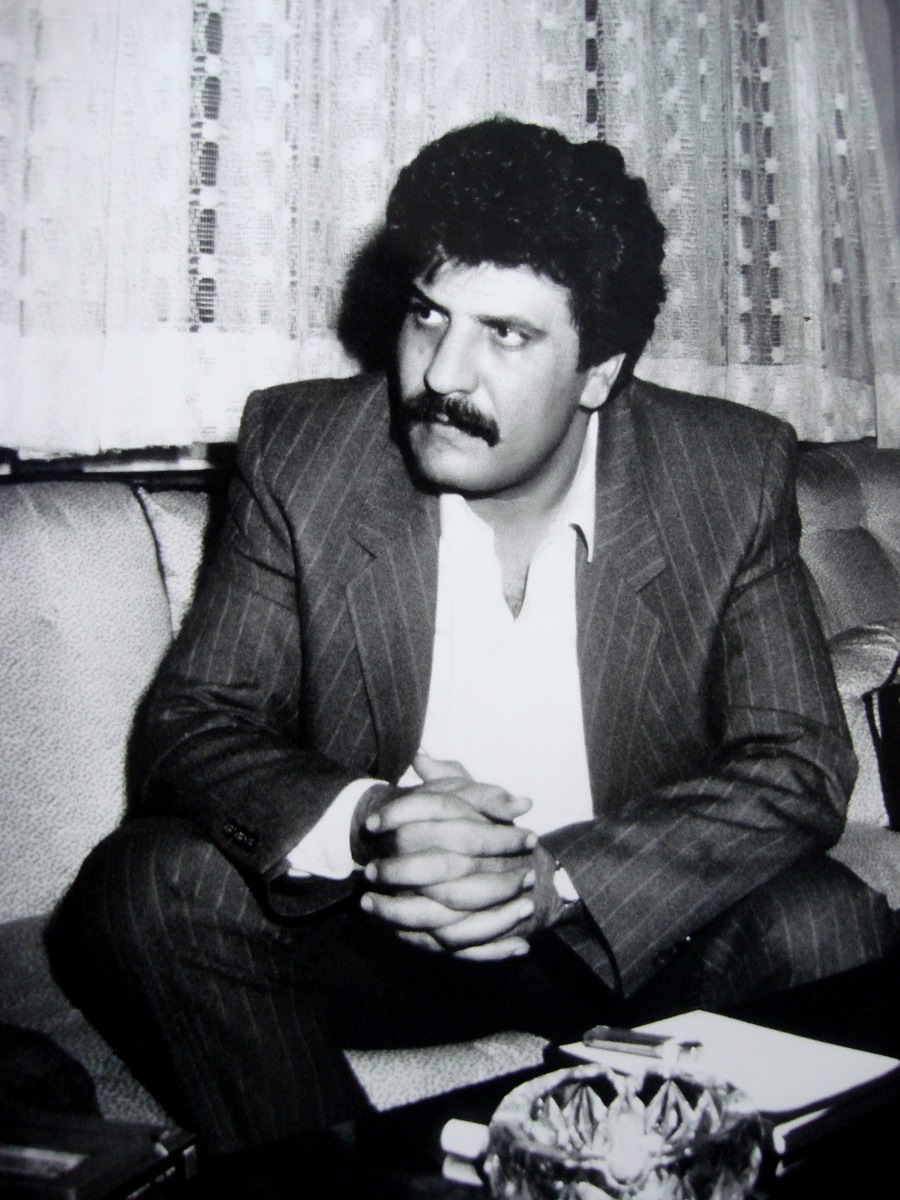
"Abu Abbas is apparently there," came the reply.
Who? The name meant nothing to Jadran, until the hijacking was mentioned. Oh, THAT Abu Abbas. He was convinced that his competitor was coming to get the exclusive photo. With a bounty of $2.5 million on his head, there would be a nice earning from an exclusive photo. Especially as nobody knew where Abu Abbas was.
But how to get the photo?
Fate, and a large helping of Jadran charm, came into play. As he waited at the arrival hall of Belgrade Airport for his rival and those baby supplies, Jadran bumped into Mirko Marinovic, the Federal Deputy Minister of Information, and his secretary Tatjana Lazarevic, who had arrived on the same flight. Their driver had not turned up, and so Jadran gave them a lift in his car.
"So you are going to the Helmut Schmidt press conference?" asked the deputy minister who was sitting in the front next to Jadran. Jadran looked into the rear-view mirror to catch his rival's eye as he replied.
"No," he replied. "Something far more interesting. I hear Abu Abbas is in town." His rival's jaw hit the floor, and Jadran knew he was onto something. And then, Tatjana, who was married to Vjesnik reporter, Dobrica Pivnicki, uttered some quite incredible words:
"My husband interviewed Abu Abbas last night."
"Then let's drop your boss and go to your place and see if your husband can arrange a photoshoot. I know Dobrica loves hunting - tell him I will buy him the hunting rifle of his choice if he can do it."
Tatjana wondered what they should do with the rival photographer, but Jadran explained the code of conduct. In cases like this, they worked together and split the fee if they were both there until the end.
Although the promise of a good hunting rifle was a wonderful enticement, Dobrila was not sure he could pull it off, but he promised he would try. This was an era before the mobile phone, and so Jadran and his former rival turned colleague had to sit and wait at his place for the phone to ring.
They waited. The wife of the colleague back in Zagreb was getting increasingly mad at her husband, convinced he was just drinking and chasing Belgrade beauties with Lazic. On day 3, the pressure was too much, and the colleague promised his wife he was coming home.
But there were no tickets! Jadran was even more keen for the guy to leave than he was himself. A favour at the airport miraculously produced a ticket, and the competition was dispensed with. If Tatjana could deliver, he would have a world exclusive!
And then... the phone rang.
The Palestine Liberation Organization had its office in a private house. When they got there, Jadran gave a copy of his book, The Reporter, to Abu Abbas as a gift. He thanked him and said they could begin. The room was nondescript – a couch, a few armchairs, a coffee table and some pictures on the wall. Jadran took pictures of Abu Abbas on the couch, on an armchair, and then he saw that one of the pictures on the wall – a bit further to the side – was of a group of people with Yasser Arafat and Pope John Paul II in the centre.

Jadran asked Abbas if he could move the picture to a spot above the armchair, right over his head. He didn’t mind – on the contrary. When he saw Abu Abbas was totally relaxed, Jadran asked him something only someone from Split could ask. Could he, please, gesture as if he were shooting a Kalashnikov? He said yes again! In the end, they even took a picture together.
A wanted terrorist with a bounty of $2.5 million dollars on his head, and there they were, talking about the naked models in Jadran's book.
“Wow! Perhaps I could join you for a photo session like this one in the future?” asked Abu Abbas.
“Of course. Who could resist the two of us?”
Dobrica good his hunting rifle, Jadran got his $50,000 and photo on the cover of Time Magazine. But nobody ever read poor Dobrica's interview, as Yugoslavia denied for years that he had ever been there.
You can follow the series categorising the exploits of Jadran Lazic and his camera, as well as his magnificent lavender field, in this dedicated TCN section.
For more information on Jadran's forthcoming monograph, click here.
In next week's story, how Jadran became the only accredited photographer with a Western agency to photograph the body of Soviet leader Leonid Brezhnev lying in state, photos which earned him considerably more than this shot of Abu Abbas.
World-Famous Photographer Jadran Lazic Announces Monumental Two-Part Monograph
February 26, 2021 - World-famous photographer Jadran Lazic has announced the release of a monumental two-part monograph in both Croatian and English.
It has been more than 45 years since the young Split photographer Jadran Lazic told his friends at the cult Split cafe Semafor that he was going to Paris.
“They’re only waiting for you,” his friends told him, and almost five decades later, Paris really was waiting for him. Like the rest of the world, Index.hr writes.
"I was thinking of three options. New York, London, or Paris. New York was too far away, and I realized I couldn't hitchhike if I failed. London was, to my knowledge, too rainy and foggy, so I opted for Paris," Lazic says at the beginning of the conversation.
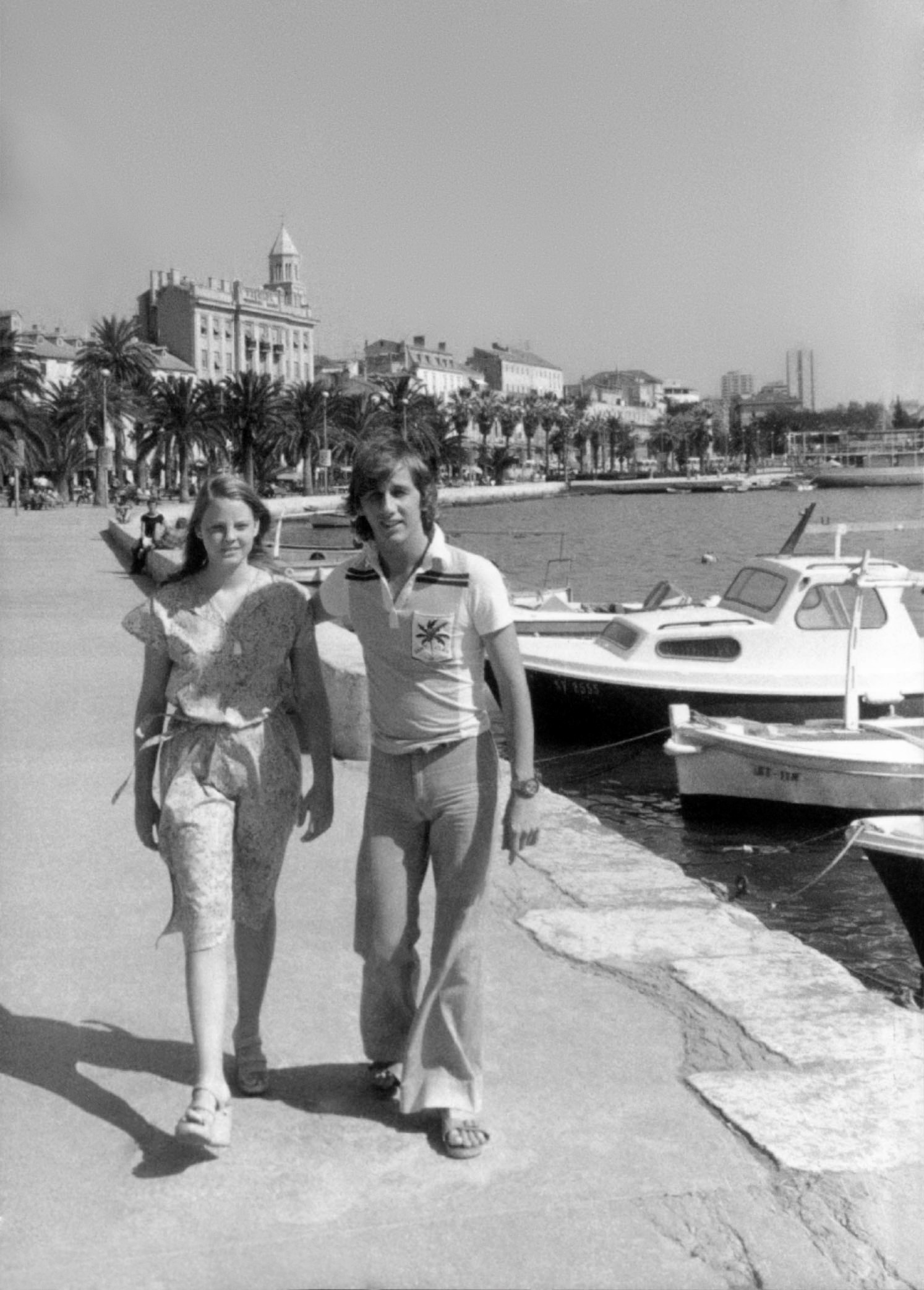
Lazic with Jodi Foster in Split, 1978
In recent months, a monumental luxury reissue of his two books, Ja Paparazzo and Reporter, has been in preparation, covering the period up to 1984. The new books will also include the period from 1984 to 2020, which fans of his photography will buy in a unique whole. Before the Internet, Lazic's books had large circulations, and thousands of people wanted to see movie stars and moments captured by the famous photographer.
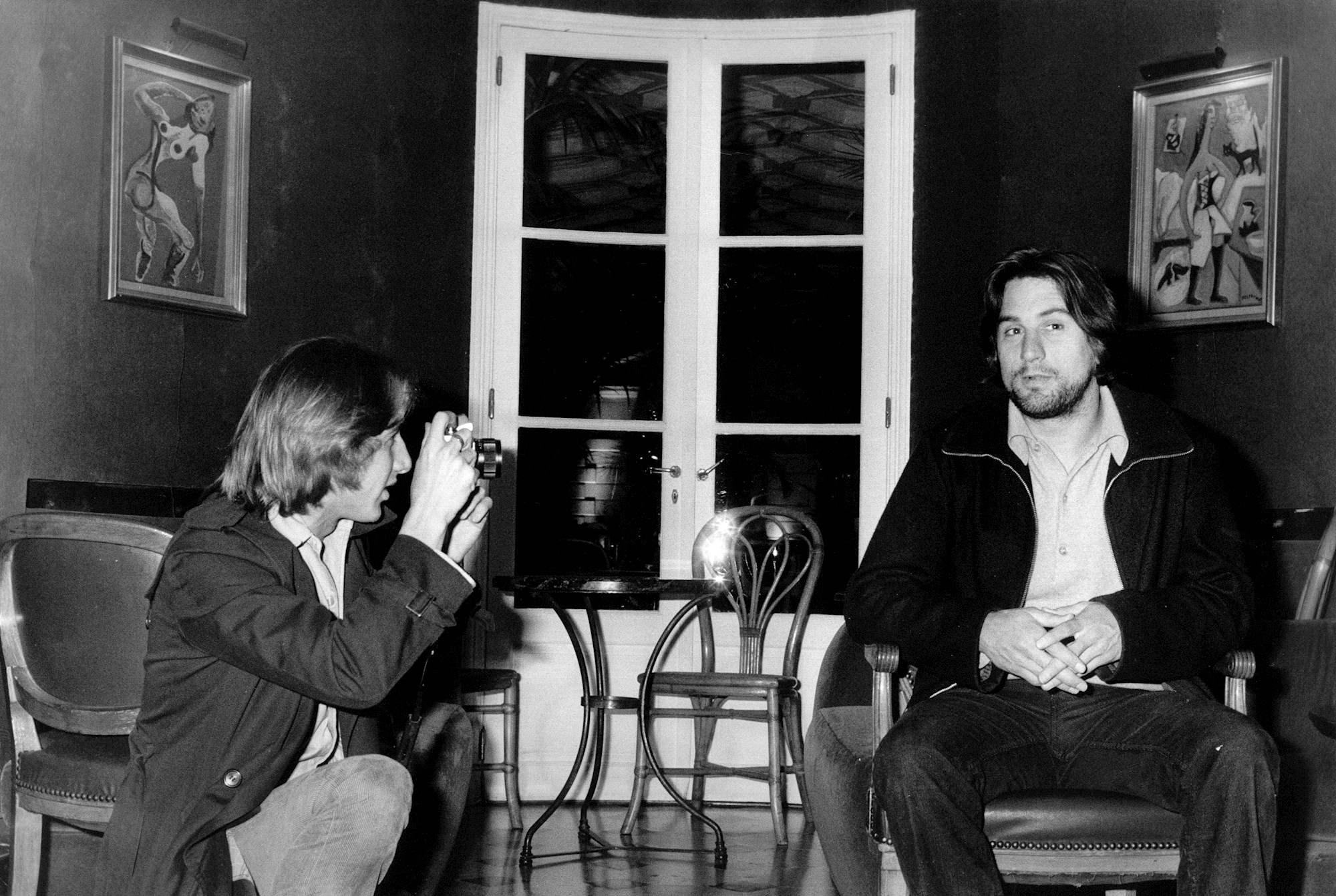
Lazic with Robert de Niro in Paris, 1975
Ja Paparazzo, published in 1980, sold 10,000 copies, and Reporter, a book published two years later, had a circulation of 5,000. Reporter was published in an updated edition in 1985 when it sold 10,000 copies.
The two-part monograph (Part 1 500 and Part 2 400 pages) will be published in Croatian and English.
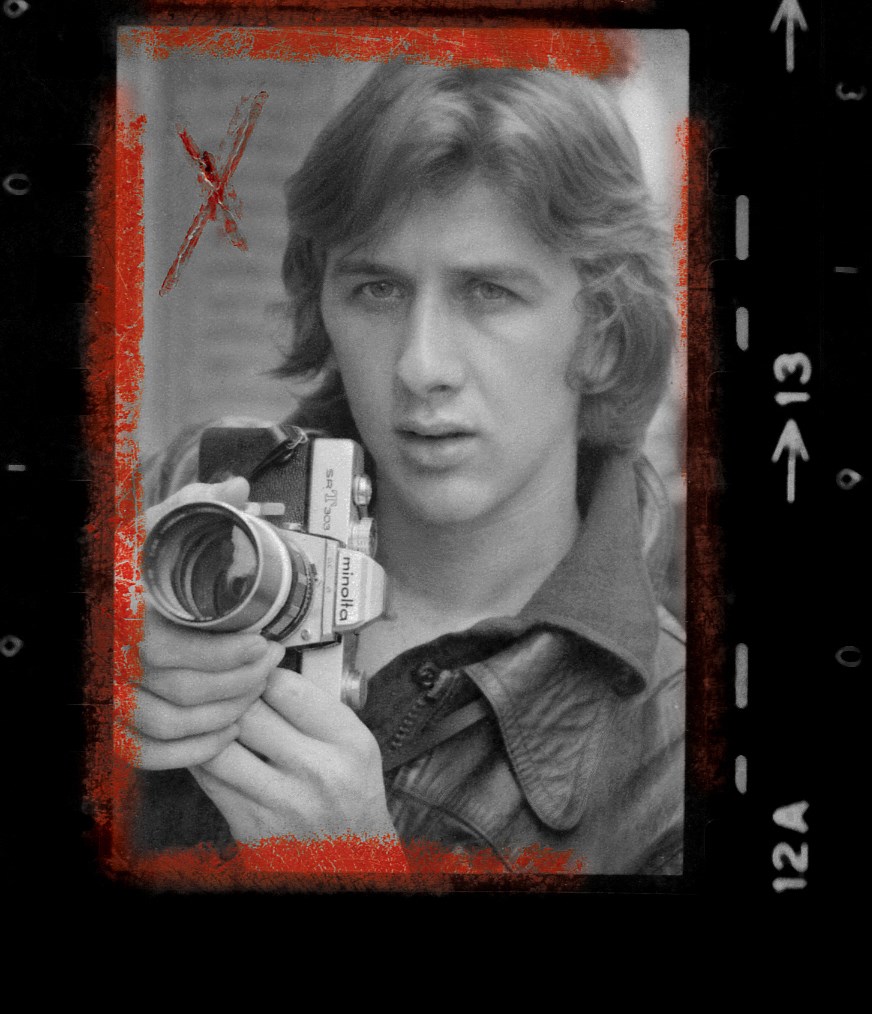
After the monograph sees the light of day, a photo tour of the former Yugoslavia cities is in the works.
There are many great photos to be found inside - from Split's most famous people to the biggest Hollywood divas and movie stars.
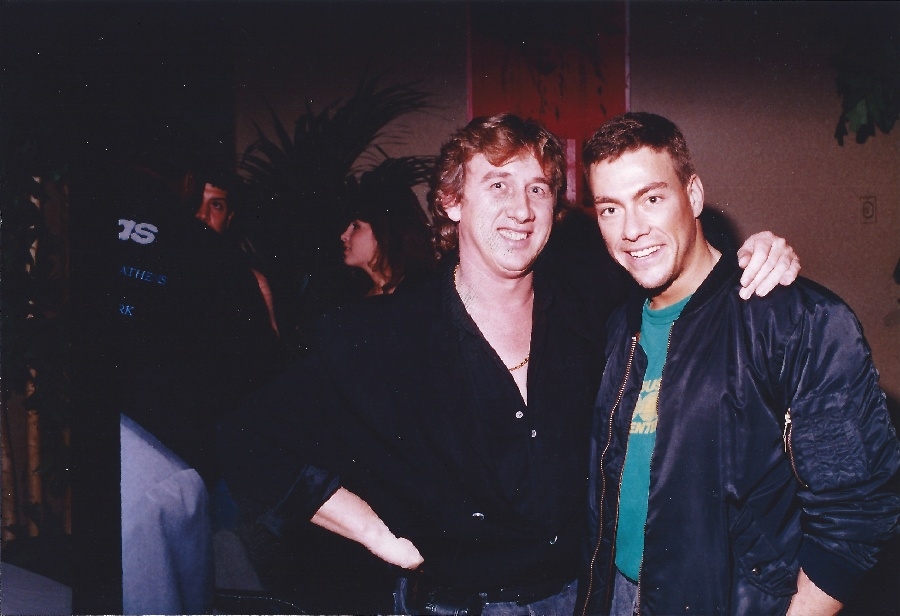
Lazic and Jean Claude Van Damme, 1988.
The last photos in the monograph, which features Lola Astanova, were taken during the coronavirus pandemic. Lazic says they were taken, among other things, because his wife quarantined him in Los Angeles every time he returned from a trip.

Photo by Jadran Lazic
"I was connected to Lola Astanova by Feliks Lukas, director of the WTA tennis tournament Croatia Bol Ladies Open. During this Covid time, we still organized a shoot in Miami at the end of October last year. My younger daughter Kiki and I surprised my older daughter Tamara for her 40th birthday in New York. So that my wife wouldn't quarantine me again, I continued from New York to shoot Lola in Miami," says Lazic.
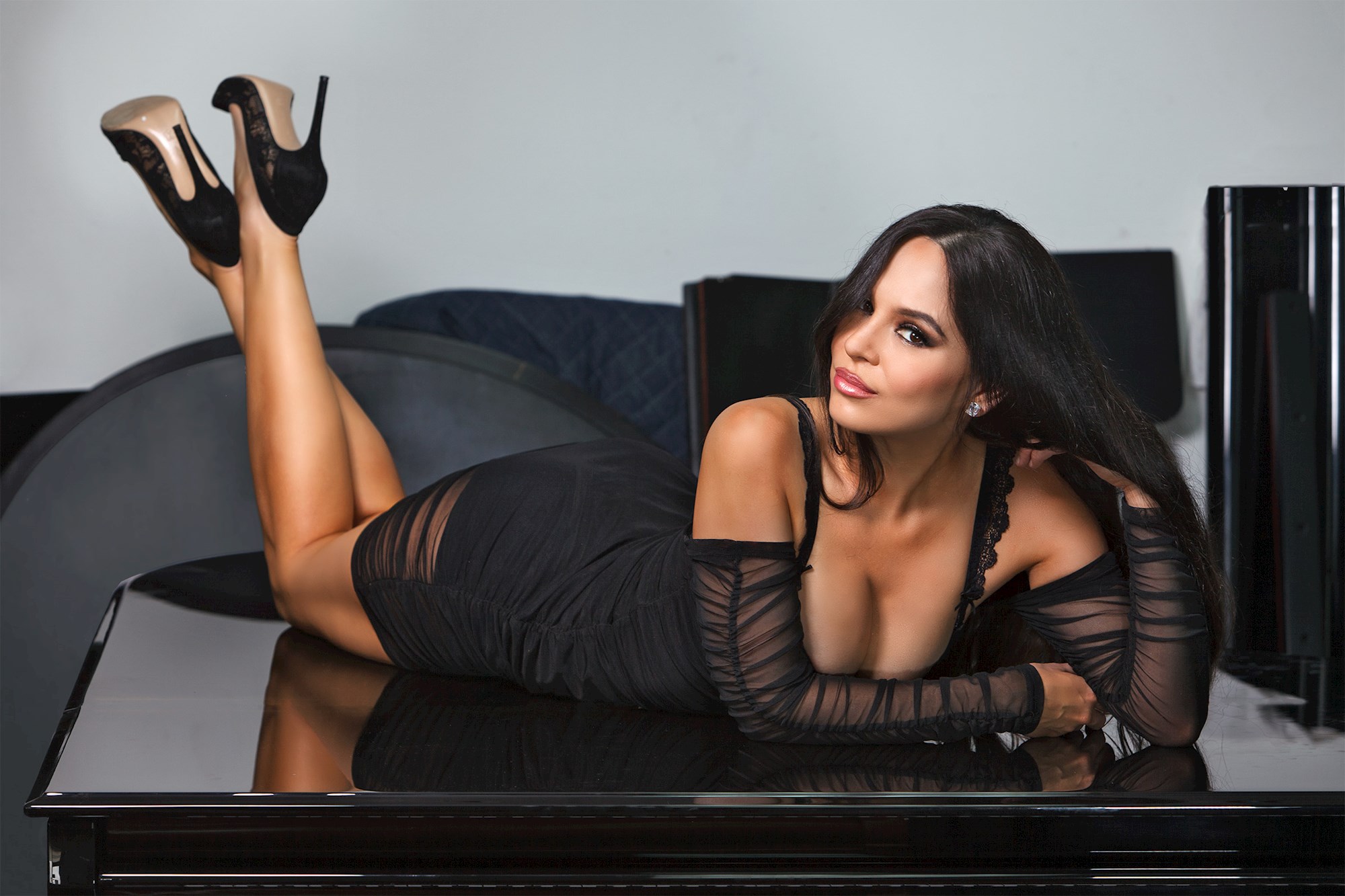
Photo by Jadran Lazic
Lazic says he was persuaded to do this monograph project by his friend Silvija Hraste. On his recommendation, he hired the Croatian Authors' Agency as the book publisher and gave it a general mandate to take care of its copyrights and further promote the author's work. The most important part of the future promotion will be the publication of a monograph that will truly be a treat for collectors and photography lovers. In addition to the photographs that accompany his work in Split, Paris, and Los Angeles, the author has prepared accompanying texts and anecdotes that describe the situations in which the photographs were taken. Some of them are truly cinematic.
One of them was definitely photographing Leonid Brezhnev's funeral when Lazic photographed for the French agency SIPA Press. Thanks to the Iron Curtain, it was almost impossible to get from Western Europe to the Soviet Union, but Lazic succeeded.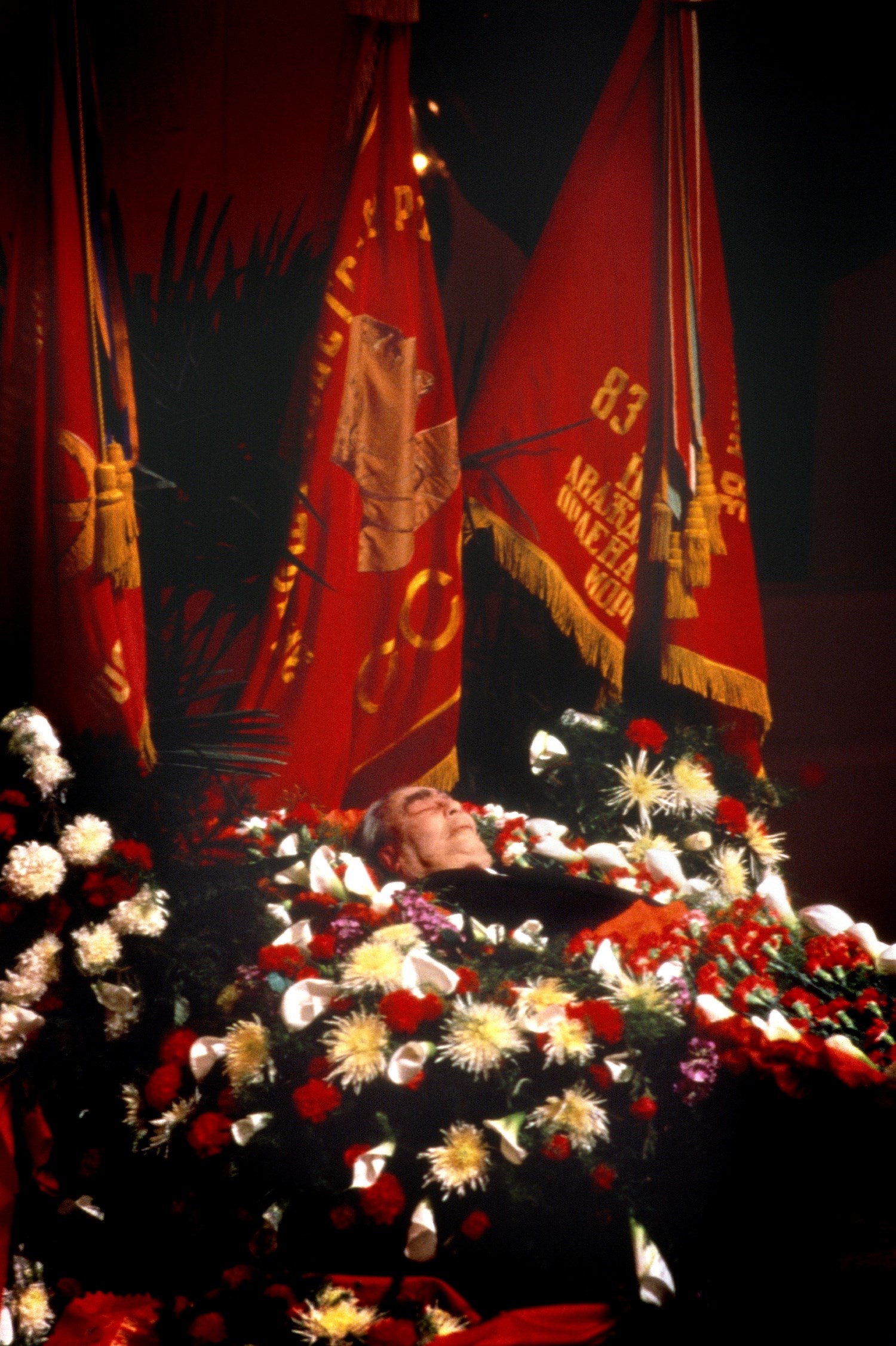
Photo by Jadran Lazic
In Belgrade, he received the accreditation of a Serbian media outlet and went to Moscow as a Yugoslav photographer.
He managed to photograph the funeral and the body of the deceased Brezhnev, returned to Belgrade, and then to Paris, where his boss offered him his Mercedes.
Lazic refused the Mercedes and asked to split the money in half. Then he earned enough money for a villa on Hvar, where he stays today when he visits his homeland.
Can a similar success happen to photographers today? Index asked.
"No. It can't happen again. Today, everyone would record the funeral with their mobile phones," says Lazic.
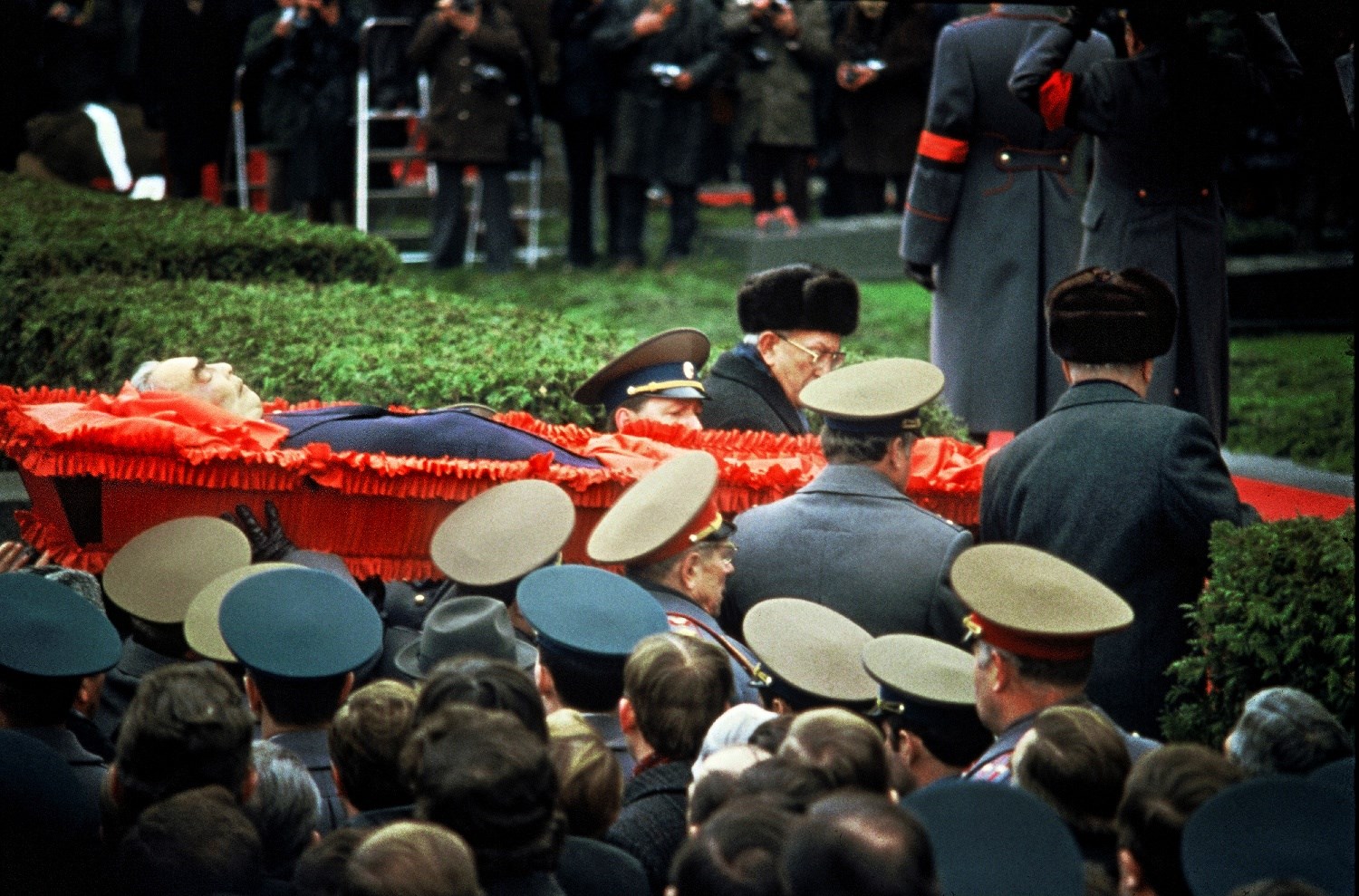
Photo by Jadran Lazic
Among the numerous film and television stars who posed for Lazic and whom he managed to capture with a lens, the photographs of Princess Diana are very rare.
“I photographed her a few times at the Cannes Film Festival,” he tells Index, but he was never in a group of paparazzi who hunted down the princess around the world. Princess Diana was a catch for the paparazzi for years and eventually died while fleeing from them.
"She had her favorite photographers even though it doesn't seem like it today. That's why I didn't have the ambition to chase her," says Lazic.

Index asked Lazic if Hollywood actresses are as insecure as ordinary mortals when posing for a photo?
"No. They are most confident and safe in front of the camera, and they see the photos immediately after the photoshoot. At that time, photoshop began to develop, so the photos were fixed a bit. Of course, not in the amount that is done for Instagram today," says Lazic, who once photographed the famous Mila Jovovich nude.
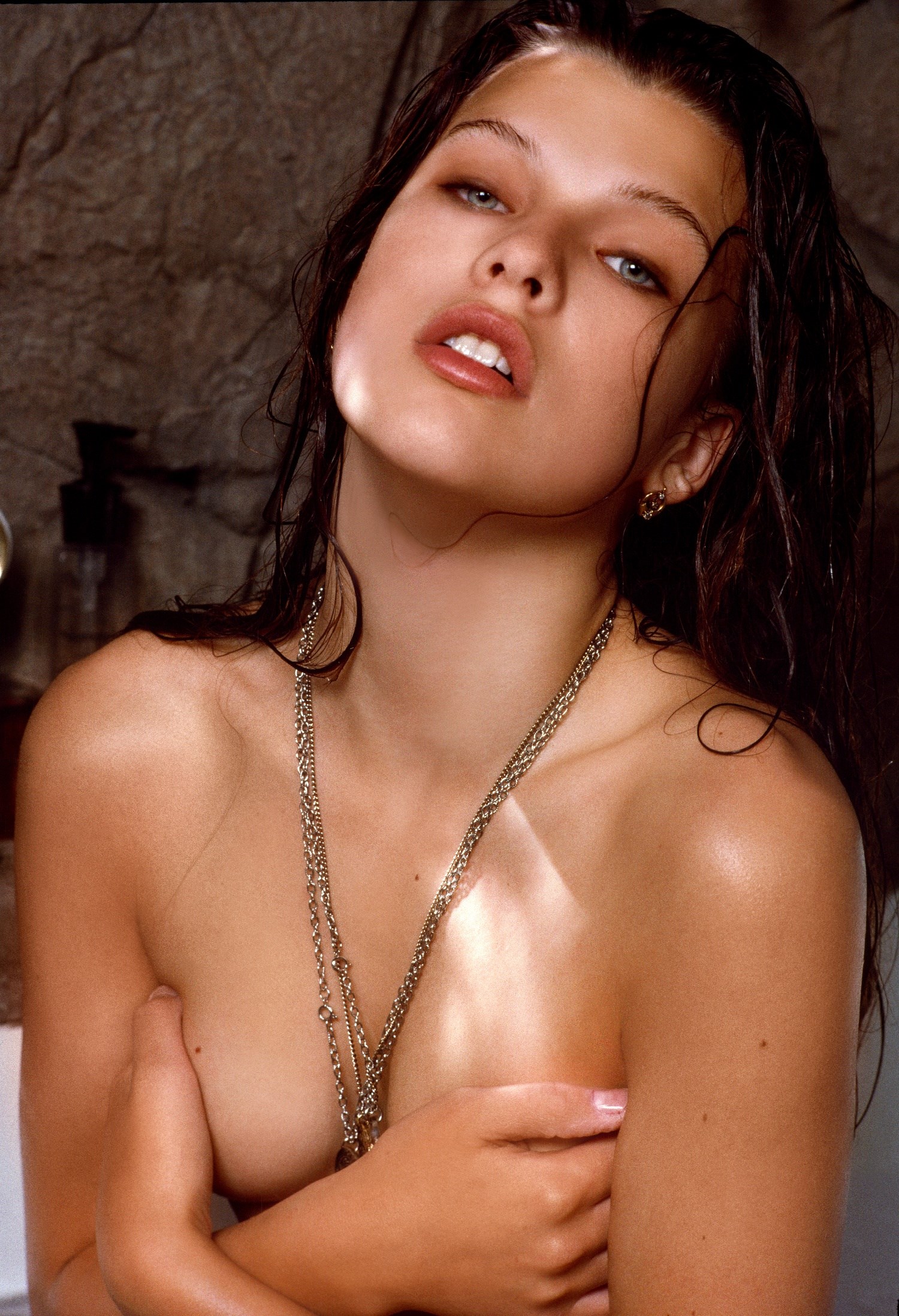
Photo by Jadran Lazic
"Instagram has destroyed photography and the profession. Today there are a billion applications; actresses take photos of themselves and edit pictures. They don't need photos for magazines anymore because they have a much larger audience on Instagram than any magazine," says Lazic.
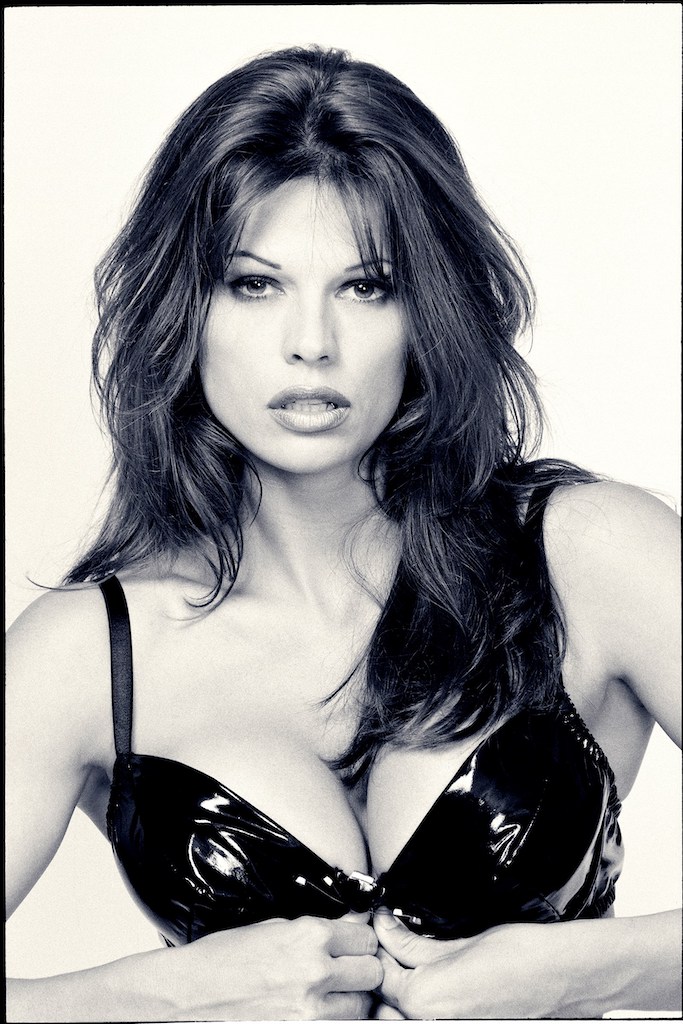
Photo by Jadran Lazic
Although he has an Instagram account, he hasn’t used it in a long time.
"It's a waste of time. I have no one to prove myself to anymore, especially on Instagram," says Lazic.
Still, he often photographs his friends for the popular social network, and the results regularly delight them.
He also revealed the recipe for the perfect Instagram photo:
- Wipe the lens on the cell phone well
- The light source must always be behind your back or to the left or right of the object. It should never be behind the object
- Inhale for a moment as you take the photo
Towards the end of the conversation, Index couldn’t help but wonder what Jadran's friends from Semafor said when he returned from Paris with a collection of photos of famous actresses, many of whom were naked.
"'Jeba on svoju mater,' they said," Jadran Lazic concluded.
To read more about lifestyle in Croatia, follow TCN's dedicated page.
Harvesting Lavender on the Top of Hvar with Jadran Lazic
July 19, 2020 - Harvesting lavender on top of Hvar, what can be more magical than that? A visit to the aromatic fields of Jadran Lazic.
It has been one of my favourite summer activities for the last 7 summers, and I have not missed a single harvest.
They used to start with a 4 am wakeup call and an early descent to the top of Croatia's premier island and straight to work before the heat became too fierce. These days, harvest lavender in the fields of Jadran Lazic takes place in the late afternoon.

Back in 2013, I accompanied Jadran on his first harvest, which consisted of one expert harvester cutting the precious lavender bushes, while Jadran used his photography expertise to record the event. It was just the three of us, the bushes were small, and we were finished within the hour.
The bushes grew, and so did the team of pickers. A grill for the workers was added to the schedule, and it became a great social event, as well as one of the most enjoyable authentic experiences of my time in Dalmatia.
No decent lavender harvest comes without the workers bursting into song. Beautiful.
Posted by Paul Bradbury on Wednesday, 17 July 2019
Especially when the workers spontaneously started singing their traditional songs while working in the fields. Listen to these guys above.
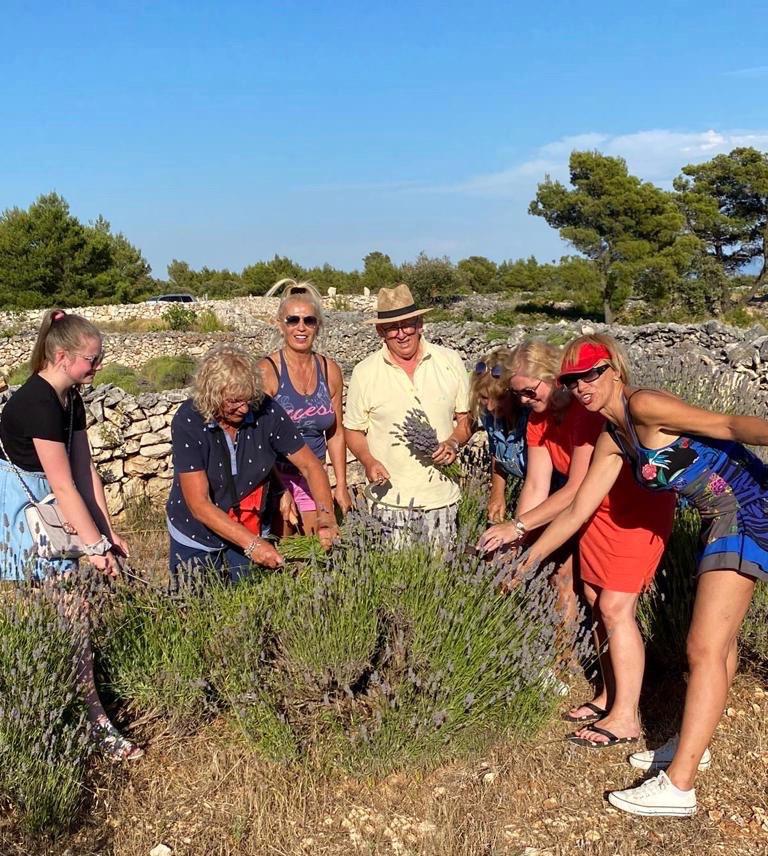
Jadran brought some of his celebrity friends from LA, all amazed at the tranquil, authentic way of life he enjoys on Hvar away from the much higher-profile life in LA.
A private tour of one man's passion. Jadran Lazic gives a tour of his lavender field on the top of Hvar.
Posted by Paul Bradbury on Wednesday, 17 July 2019
Here is Jadran, interviewed by me last year, telling us how his project got started, before demonstrating how to cut lavender.

Sadly this year, after 7 faithful years of attendance, I was unable to make it to Hvar, but I will be there next year for sure.
My presence was clearly not missed, and the happy team from all over the world worked hard to cut the raw materials to produce 3 precious litres of lavender oil.
Jadran uses this oil daily back in the States to remind himself of Dalmatia. Always a Split boy at heart, he puts a drop on his pillow each night before bed to remind him of his beloved Dalmatia, and he sleeps like a baby.
Check out some of the photos of this year's harvest below, as well as a video overview of the whole experience a couple of years ago.
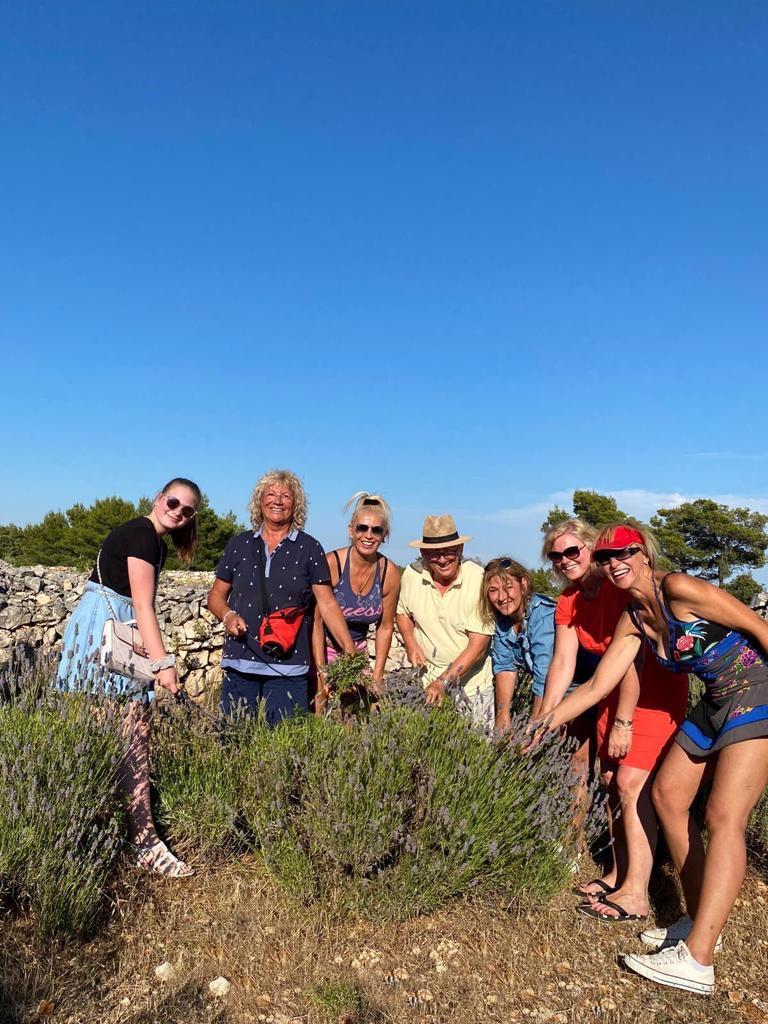

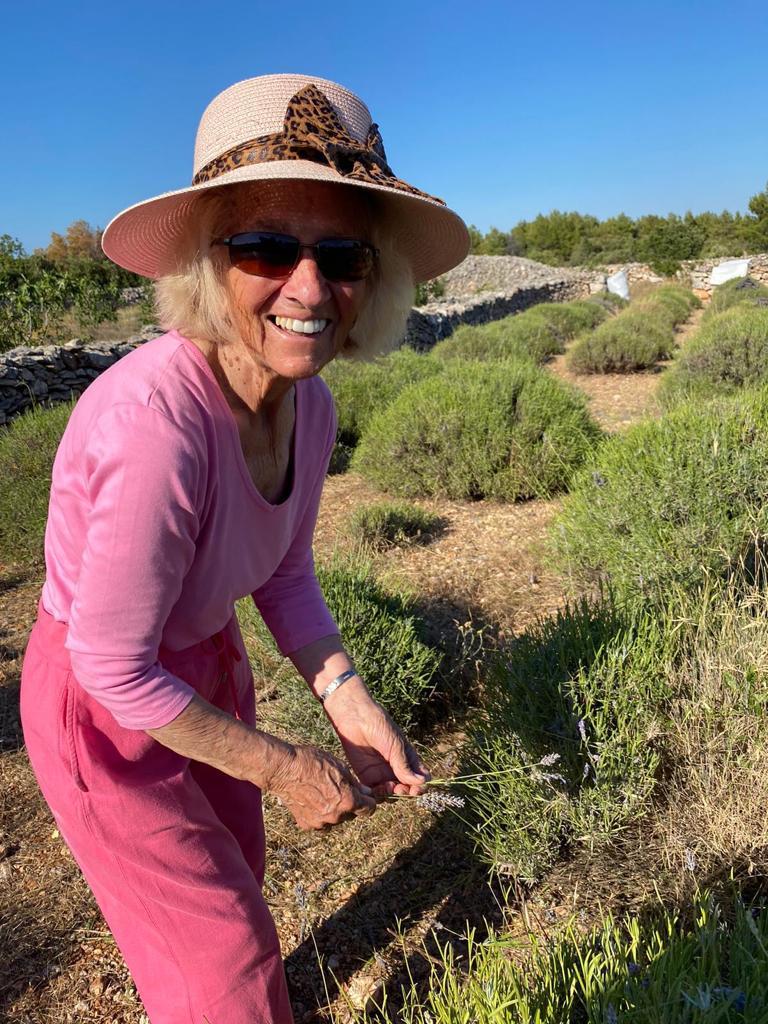


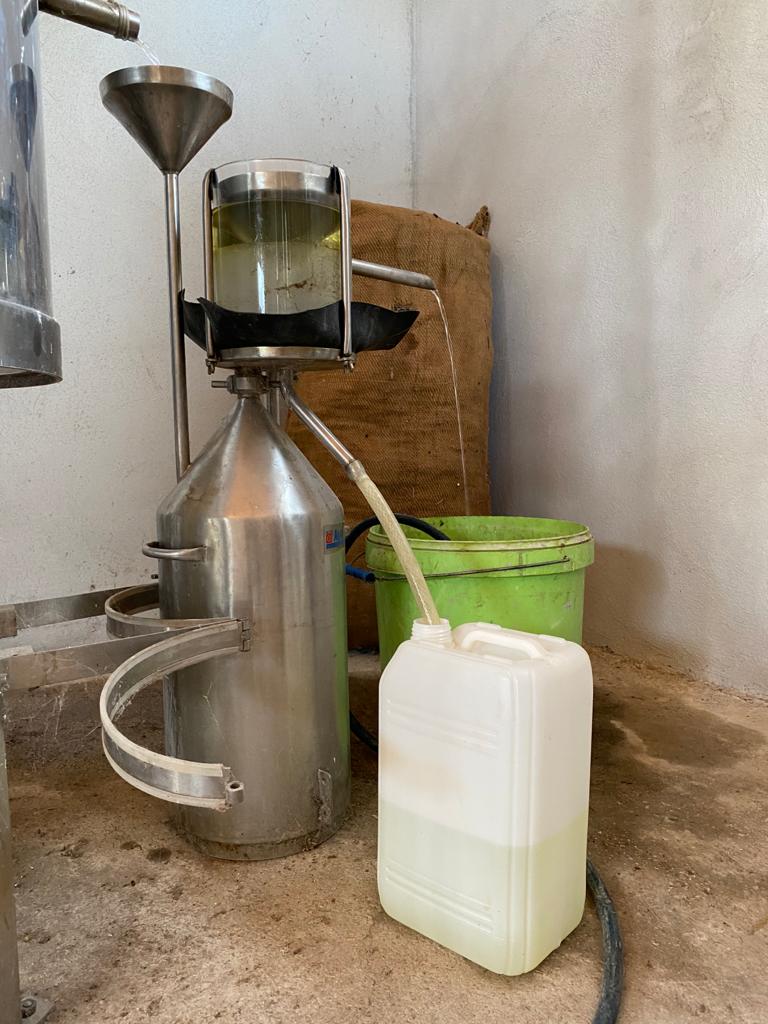
Nikola Radovani Exhibition: When a Celeb Snapper Meets Local Talent
July 23, 2019 - Jelsa's talented photographer Nikola Radovani has a great exhibition on Saturday and recently met Croatia's first celebrity photographer for some advice.
One of the things I most love about Hvar is just how egalitarian it is. We are all here for the same reason - to relax and enjoy the lifestyle and the beach, and it doesn't really matter who you are in your other life. The rich and famous mingle as easily on Hvar as anyone else in the world, and as long as you are not a British prince falling into a nightclub swimming pool, the rich and famous are generally left alone. For they are here for the same reason.
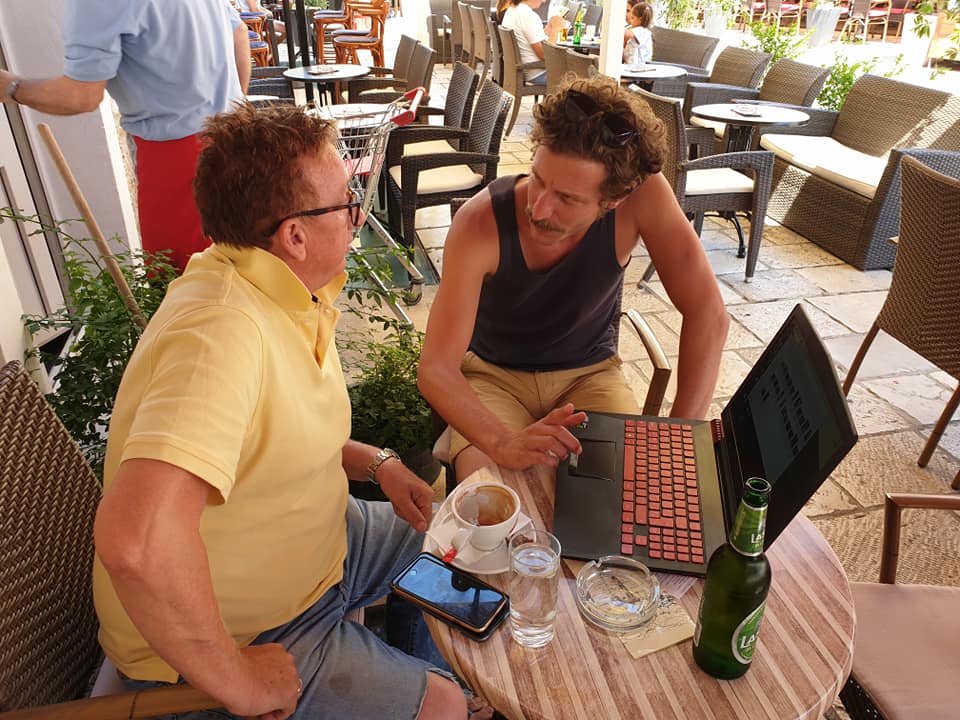
A really lovely moment the other day in Jelsa that was a pleasure to watch. I was having a post-lavender harvest chat with Jadran Lazic at The Office. As he was telling me about his first big break - bluffing his way into Charlotte Rampling's hotel room and photographing her smoking seductively on the couch - someone approached us and asked if Jadran had a few minutes to look at his work.
It was popular local photographer, Nikola Radovani, and Jadran was more than happy to help.
And so it began. All talk and memories of Charlotte Rampling on the sofa were forgotten, and the two photographers got to work, with Jadran giving high praise at the quality of Nikola's work while offering a few tips.

It was somewhat ironic, given the quality of photographers in front of me, that the person recording the event was once described in the national media as the worst photographer in Dalmatia.
I am still proud of that.

Come and see Nikola's work for yourself this Saturday in the main street in the old town of Jelsa behind the church, as his Hvar landscapes will be exhibited from 19:30.
Here is a link to the event's Facebook page.
To learn more about the destination of Jelsa, here are 25 things to know.
Green Day, Guns N' Roses and You: Buy Jadran Lazic Photos in Split
July 21, 2019 - Croatia's first international celebrity snapper has an exhibition of his photographs in his native Split. The photos of Jadran Lazic are also for sale, and look who is buying back in L.A.
One of the things I most love about Dalmatia is its egalitarian nature. It doesn't matter who you are back home - we are all here for the same reason - to chill - and that makes us equal.
Hvar is known for its very relaxed approach to celebrities, and they are broadly left alone - unless of course you are a drunk British prince who happens to fall into a nightclub swimming pool on camera. Nice one, Harry.

Even though Jelsa is not Hvar Town, I have been privileged to meet all sorts of fascinating characters there over the years, from billionaires and top journalists to celebrities and Masters of Wine (yes, two of the 400 in the world).
I am good friends with one of the (ok, THE) best Croatian photographers, Mario Romulic. A few years ago, he was having a coffee across the square and called me over. And that is how I met Jadran Lazic, the man who brought Jodie Foster to Hvar as a 15-year-old, and whose many career highlights included being the only journalist for a Western press agency to get pictures of Soviet leader Brezhnev's funeral in Moscow in 1982, and Palestinian terrorist Abu Abbas, who was on the run after the hijacking of the Achille Lauro in 1985. Both these stories I will tell shortly for the first time in English.

Jadran is a great raconteur, and I have enjoyed our chats over the years, learning how he got started with Paris agency SIPA after bluffing his way into the hotel room of Charlotte Rampling, and of the biggest moment of his career - getting a press pass at Hajduk Split aged just 16.
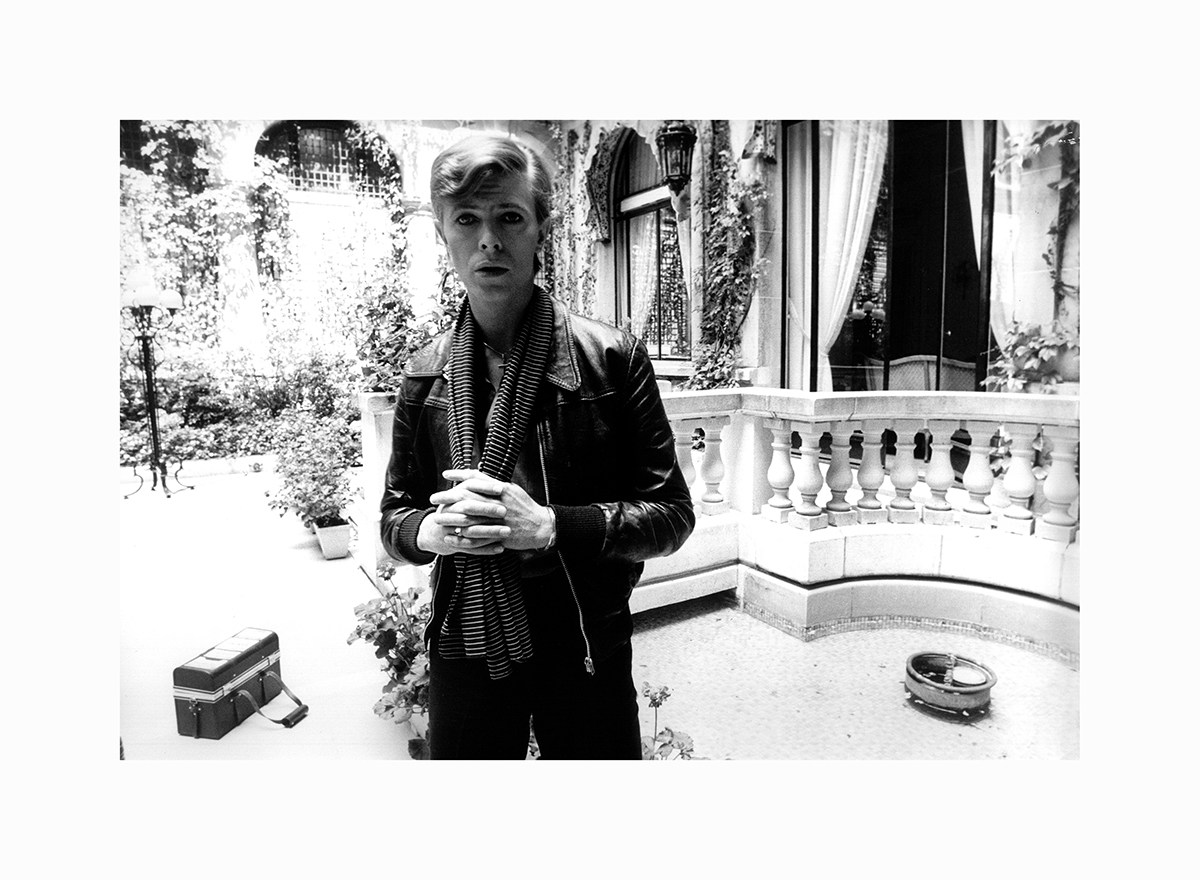
He is currently having a photo exhibition of his work at Foto Klub Split, including exclusive photos of David Bowie, never shown before in Europe. More than 600 people turned up for the opening of the exhibition last week. The exhibition runs until August 4 at Foto Klub Split on Marmontova, and Jadran tells me that all the photos at the exhibition are for sale.
And he has plenty of celeb buyers back in LA, including Mike Dirnt from Green Day and Frank Ferrer from Guns N' Roses. Prices range from 1,000 - 2,000 euro.
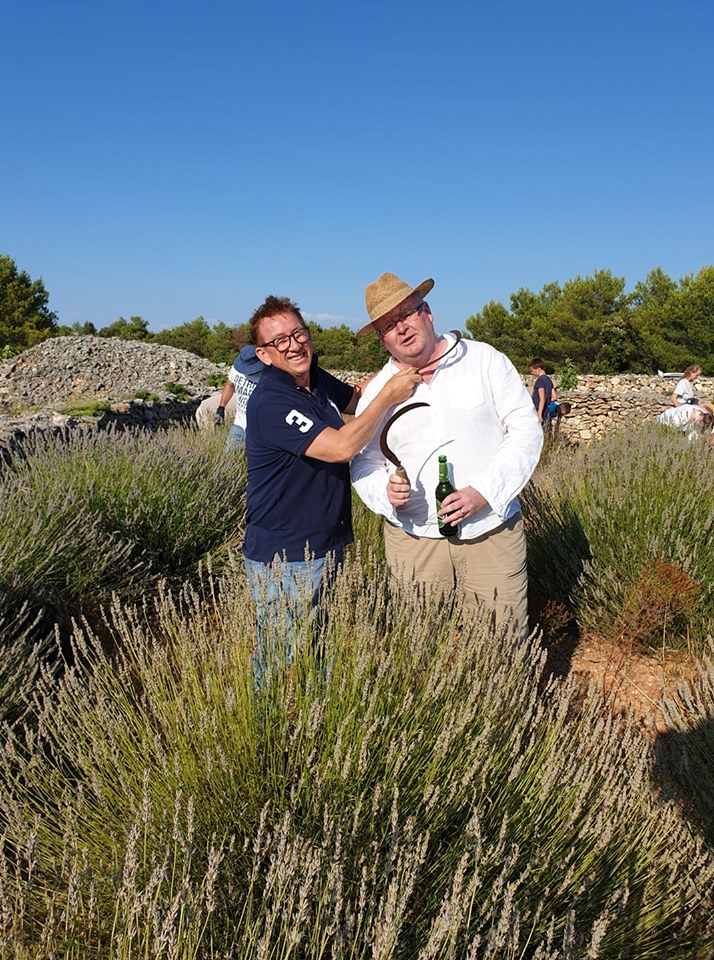
When not snapping celebrities, Jadran can be found on the top of Hvar in his beloved lavender field, and the lavender harvest is one of the most authentic experiences you can have in Croatia. Read more about that here.
Harvesting Lavender with Jadran Lazic at 6am on Hvar: Aromatic Paradise
July 6, 2018 - It is lavender season on the island of Hvar, and an early start for TCN to go work in the lavender fields of celebrated paparazzi, Jadran Lazic.
Croatian Paparazzi Jadran Lazic Displays Unseen David Bowie Photos at Hollywood Exhibition
June 10, 2018 - He brought a 15-year-old Jodie Foster to Hvar and was the only Western-accredited journalist to photograph Brezhnev's body lying in state back in 1982. And it seems Split's most famous paparazzi has one or two more photos to share.




